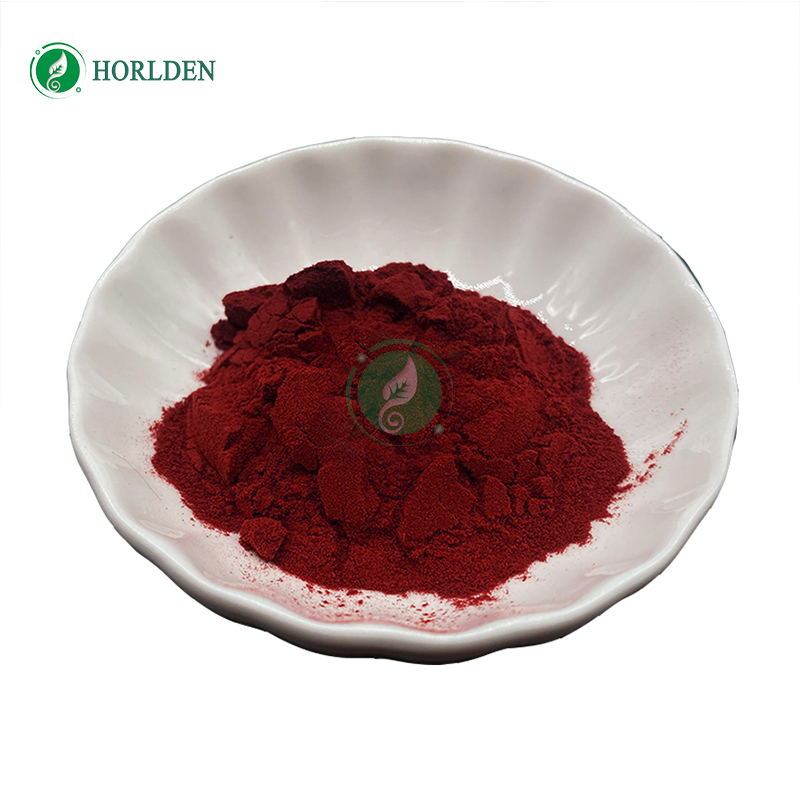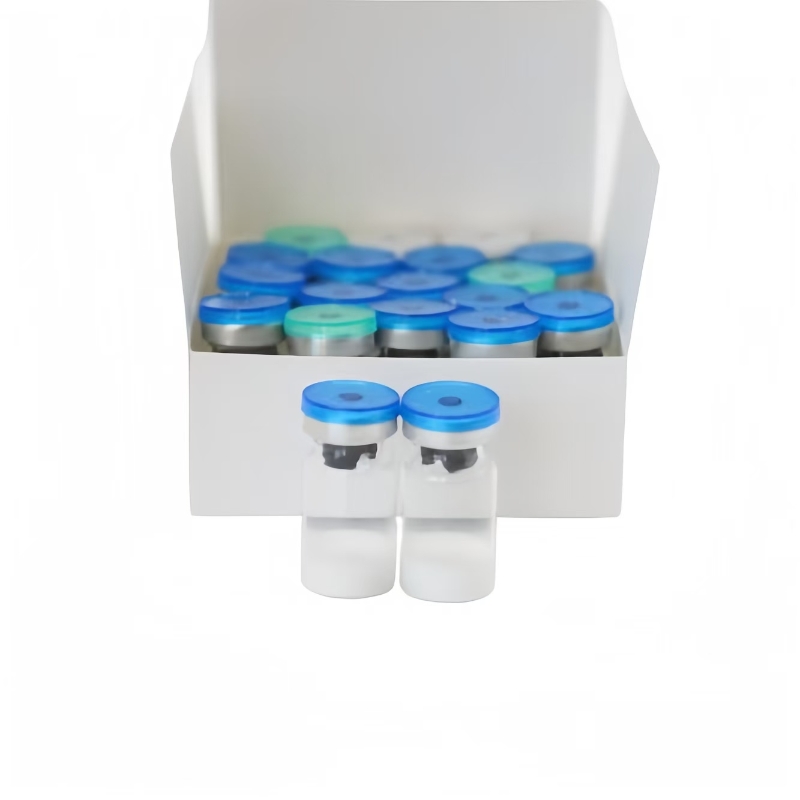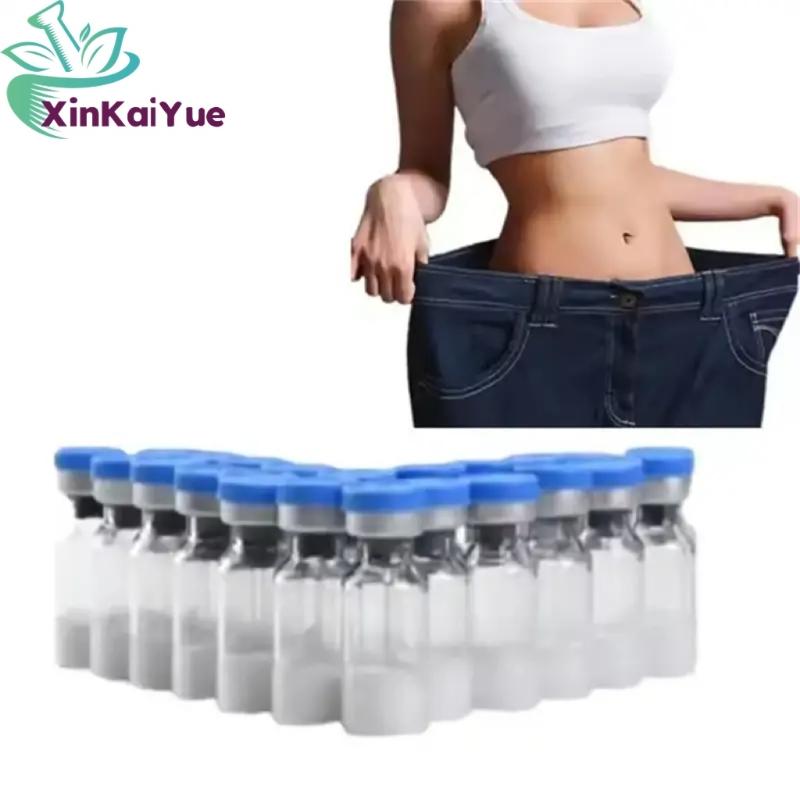Nonalcoholic fatty liver disease (NAFLD) is on the rise, attacking nearly 50 billion highlands of liver disease
-
Last Update: 2018-04-01
-
Source: Internet
-
Author: User
Search more information of high quality chemicals, good prices and reliable suppliers, visit
www.echemi.com
With the improvement of people's living standards, fatty liver has become a multiple disease in China On December 2, 2016, the national government issued the clinical pathway of nonalcoholic fatty liver disease (2016 Edition), which aims to pay attention to and improve the clinical pathway diagnosis and treatment program and implementation effect, further enhance the awareness and management awareness of nonalcoholic fatty liver disease (NAFLD), and comprehensively improve the National Health level According to the statistical data forecast, the market of liver protecting and enzyme reducing drugs in China will reach 12 billion yuan in 2020, and its 10 billion yuan feast has attracted the extension of many pharmaceutical companies' R & D pipelines; it is reported that Jiangsu Hengrui pharmaceutical has carried out the imitation development of obecholate acid, and entered the field of fatty liver none="shifuMouseDownStyle('shifu_bus_002')" style="margin: 1em auto; padding: 0px; max-width: 100%; color: rgb(62, 62, 62); font-family: "Hiragino Sans GB", "Microsoft YaHei", Arial, sans-serif; font-size: 16px; line-height: 25.6px; widows: 1; border-style: none none solid; text-align: center; border-bottom-width: 1px; Border bottom color: rgb (0, 0, 0); box sizing: border box! Im portant; word wrap: break word! Im portant; "> nonalcoholic fatty liver disease (NAFLD) is the most common liver disease in western developed countries In April 2016, the annual meeting of the European Society of Hepatology officially released the first guide for diagnosis and treatment of nonalcoholic fatty liver disease in EU countries This guideline defines it as excessive accumulation of liver fat related to insulin resistance, which further leads to inflammation and liver cell damage NAFLD mainly includes simple fatty liver, nonalcoholic steatohepatitis and cirrhosis Its main causes are closely related to obesity and diabetes Genetic, nutritional disorders and environment are also important factors This most common liver disease has affected the health of 1 / 4 of the world's people Statistical data show that the incidence of nonalcoholic fatty liver disease in adults in developed countries is 20% - 30% Because some people do not pay enough attention, 10% - 20% of adults in NAFLD population suffer from nonalcoholic fatty liver disease (NASH) In recent years, the incidence rate of global non-alcoholic steatohepatitis has reached 3%~5% It is predicted that in 2030, Nash will surpass hepatitis B and become another killer of human health The potential market size of NAFLD in the world will reach 40 billion US dollars So far, the FDA has not officially approved the drugs for the treatment of non-alcoholic fatty liver disease, only awarded the obacholic acid of intercept company in the United States as a breakthrough treatment for non-alcoholic fatty liver disease, which has aroused widespread concern in the pharmaceutical industry none="shifuMouseDownStyle('shifu_bus_002')" style="margin: 1em auto; padding: 0px; max-width: 100%; color: rgb(62, 62, 62); font-family: "Hiragino Sans GB", "Microsoft YaHei", Arial, sans-serif; font-size: 16px; line-height: 25.6px; widows: 1; border-style: none none solid; text-align: center; border-bottom-width: 1px; Border bottom color: rgb (0, 0, 0); box sizing: border box! Im portant; word wrap: break word! Im portant; "> the drug structure of nonalcoholic fatty liver in China, the prevalence of NAFLD in Chinese community adults is 10% - 45%, which is similar to the epidemiological data in North America With the prosperity of life, excess energy intake and visceral obesity, type 2 diabetes and metabolic syndrome, liver histological changes constitute the whole disease spectrum of simple fatty liver, non-alcoholic fatty hepatitis, cirrhosis and liver cancer Therefore, nonalcoholic fatty liver disease should not be ignored Liver disease belongs to an independent discipline, and there are many drugs to treat liver disease in China It is mainly composed of anti hepatitis virus drugs, liver protection drugs, anti fatty liver drugs and drugs for the treatment of liver coma According to the data, in 2016, the overall scale of liver disease medication in China has exceeded 48 billion yuan, with an increase rate of 8.5% According to the guidelines for the diagnosis and treatment of nonalcoholic fatty liver disease, the main therapeutic drugs for NASH in China are polyene phosphatidylcholine, silymarin (bin), glycyrrhizic acid preparation, bicyclol, vitamin E, ursodeoxycholic acid, adenosylmethionine and reduced glutathione, etc In recent years, the sample hospital market of these drugs has maintained rapid growth none="shifuMouseDownStyle('shifu_bus_002')" style="margin: 1em auto; padding: 0px; max-width: 100%; color: rgb(62, 62, 62); font-family: "Hiragino Sans GB", "Microsoft YaHei", Arial, sans-serif; font-size: 16px; line-height: 25.6px; widows: 1; border-style: none none solid; text-align: center; border-bottom-width: 1px; border-bottom-color: rgb(0, 0, 0); box-sizing: border-box !im portant; word-wrap: break-word !im portant; "> domestic non-alcoholic fatty liver treatment market According to the data of mienei.com, in 2016, the amount of drugs used in public hospitals in key cities was about 3.404 billion yuan, an increase of 5.94% year on year According to the data from January to September 2017, it is estimated that the amount of drugs used in public hospitals in key cities in 2017 reached 3.525 billion yuan, an increase of 3.55% year on year, occupying the city of drugs used in public hospitals in key cities 60% of the field With the improvement of people's awareness and attention to liver disease, the rapid development of liver disease series drugs has been promoted, and the market pattern of three series of drugs, including chemical drugs, plant extracts and Chinese patent medicines, has been formed, especially the drugs for protecting liver and protecting liver and anti fatty liver, showing a continuous growth trend In recent years, with the rapid growth of new drug R & D market in China, the market of combined drugs and adjuvant therapy for liver diseases has changed in an all-round way Its product structure is composed of five sub categories: liver protection drugs, enzyme reducing drugs, anti jaundice drugs, anti fibrosis drugs and anti inflammation drugs Liver disease treatment drugs have gradually become a large amount of drug varieties none="shifuMouseDownStyle('shifu_bus_002')" style="margin: 1em auto; padding: 0px; max-width: 100%; color: rgb(62, 62, 62); font-family: "Hiragino Sans GB", "Microsoft YaHei", Arial, sans-serif; font-size: 16px; line-height: 25.6px; widows: 1; border-style: none none solid; text-align: center; border-bottom-width: 1px; border-bottom-color: rgb(0, 0, 0); box-sizing: border-box !im portant; word-wrap: break-word !im portant; "> the drugs of top 10 are magnesium isoglycate, glutathione, compound glycyrrhizin, polyene phosphatidylcholine, ursodeoxycholic acid, ornithine aspartate, adenosylmethionine, bicyclol, diisopropylamine dichloroacetate and diammonium glycyrrhizinate These are liver protection drugs with high hospital awareness The adjuvant drugs for liver disease have a good stable effect on cell membrane structure and cell metabolism, can resist the necrosis of liver cells, reduce fatty liver degeneration, promote protein synthesis, inhibit the rise of alanine aminotransferase, repair the damaged liver cells and protect the liver by cholagogic, detoxification, inhibiting the production of free radicals and the formation of lipid peroxide in vivo In 2017, the amount of top 10 western anti fatty liver drugs used in public hospitals in key cities was 3.166 billion yuan, accounting for 90% of the market for liver protection and liver protection, an increase of 5.22% over the previous year, with a high market concentration Figure 1: Top 10 sales of anti fatty liver varieties in public hospitals in key cities in the first three quarters of 2009-2017 (unit: 100 million yuan) In the middle of the 20th century, glycyrrhizic acid, the effective component of Glycyrrhiza, was found With the in-depth study of the mechanism of its drug action, people have a comprehensive understanding of its anti-inflammatory, anti-oxidation, anti liver poison, stabilizing cell membrane, anti liver fibrosis, regulating immunity, inhibiting Ca2 + influx, preventing cell apoptosis and increasing the production of endogenous steroids, thus promoting glycyrrhizic acid A series of preparations have been developed and used in clinical treatment of fatty liver, chronic persistent hepatitis, chronic active hepatitis, acute and chronic hepatitis B, hepatotoxicosis and early cirrhosis Glycyrrhizic acid series of drugs is a rapidly growing variety in recent years With the expansion of clinical application, the rapid development of glycyrrhizic acid preparations has been driven There are 285 production approvals of glycyrrhizic acid approved by the state In the production process, the first generation of glycyrrhizin tablet, the second generation of Compound Glycyrrhizin tablet with β - body glycyrrhizin as the main component, the third generation of glycyrrhizin tablet, α - body and β - body mixed diammonium glycyrrhizinate and the fourth generation of glycyrrhizin tablet, capsule and injection were developed, and the oral constant release tablet, capsule and injection were gradually formed The new pattern of glycyrrhizic acid series varieties with four main dosage forms of powder injection preparation According to the data of minenet, in 2016, the amount of glycyrrhizic acid preparations used in public hospitals in key cities was 1.132 billion yuan, an increase of 11.42% over the previous year Glycyrrhizic acid preparation mainly includes 8 varieties, such as magnesium isoglycyrrhizate, compound glycyrrhizin, diammonium glycyrrhizinate, compound glycyrrhizinate monoammonium, glycyrrhizinate monopotassium and glycyrrhizinate monoammonium cysteine It is estimated that in 2017, the glycyrrhizic acid preparation in public hospitals in key cities in China was 1.227 billion yuan, an increase of 8.39% over the previous year In the first place is Zhengda Tianqing's magnesium isoglycyrrhizate, whose trade name is Tianqing Ganmei, accounting for half of the glycyrrhizic acid preparations in public hospitals Figure 3: sales volume of glycyrrhizic acid preparations in public hospitals of key cities in China (unit: 100 million yuan) in the first three quarters of 2009-2017 Figure 4: progress in the new development of glutathione preparations in public hospitals of key cities in China in the first three quarters of 2017 Glutathione is a tripeptide composed of glutamic acid, cysteine and glycine At present, glutathione has been developed artificially, which can be used to promote the metabolism of sugar, fat and protein in the body and accelerate the excretion of free radicals in the body Glutathione has the functions of protecting the synthesis, detoxification and inactivating hormone of liver It is mainly used in the treatment of liver diseases, alcoholic liver, fatty liver, etc it has a better auxiliary treatment effect on poisoning and viral hepatitis Glutathione is the leading product in the anti fatty liver Market in 2016 According to the data of mienei.com, in 2016, the amount of glutathione used in public hospitals in key cities in China was 548 million yuan It is estimated that in 2017, the amount of glutathione used in public hospitals in key cities in China was 549 million yuan, an increase of 1.82% over the previous year 5 domestic enterprises are approved to produce glutathione oral and injection preparations In addition, the sales of glutathione oral tablets in public hospitals in key cities in China exceeded 100 million, with a year-on-year growth rate of 13.86% Figure 5:2009-2017 sales volume of glutathione in public hospitals of key cities in China in the first three quarters (unit: 100 million yuan) in 2017, the proportion of domestic glutathione injection increased significantly, from 81.84% of the amount of drug used in the previous year to 99.27%, showing a trend of comprehensive reddening However, the consumption of imported high priced drugs has declined significantly, which objectively shows that the growth rate of the total sales amount is slow In 2017, the top 5 varieties of glutathione used in hospitals were: Atomolan of Chongqing Yaoyou accounted for 48.31%, an increase of nearly 10 percentage points over the previous year; shuangyijian of Shanghai Fudan Fuhua pharmaceutical industry accounted for 30.39%, also an increase of more than 5 percentage points; Songtai of Kunming Jida accounted for 11.65%, an increase of 2 percentage points; lvdinuo of Shandong LVYE accounted for 8
This article is an English version of an article which is originally in the Chinese language on echemi.com and is provided for information purposes only.
This website makes no representation or warranty of any kind, either expressed or implied, as to the accuracy, completeness ownership or reliability of
the article or any translations thereof. If you have any concerns or complaints relating to the article, please send an email, providing a detailed
description of the concern or complaint, to
service@echemi.com. A staff member will contact you within 5 working days. Once verified, infringing content
will be removed immediately.







